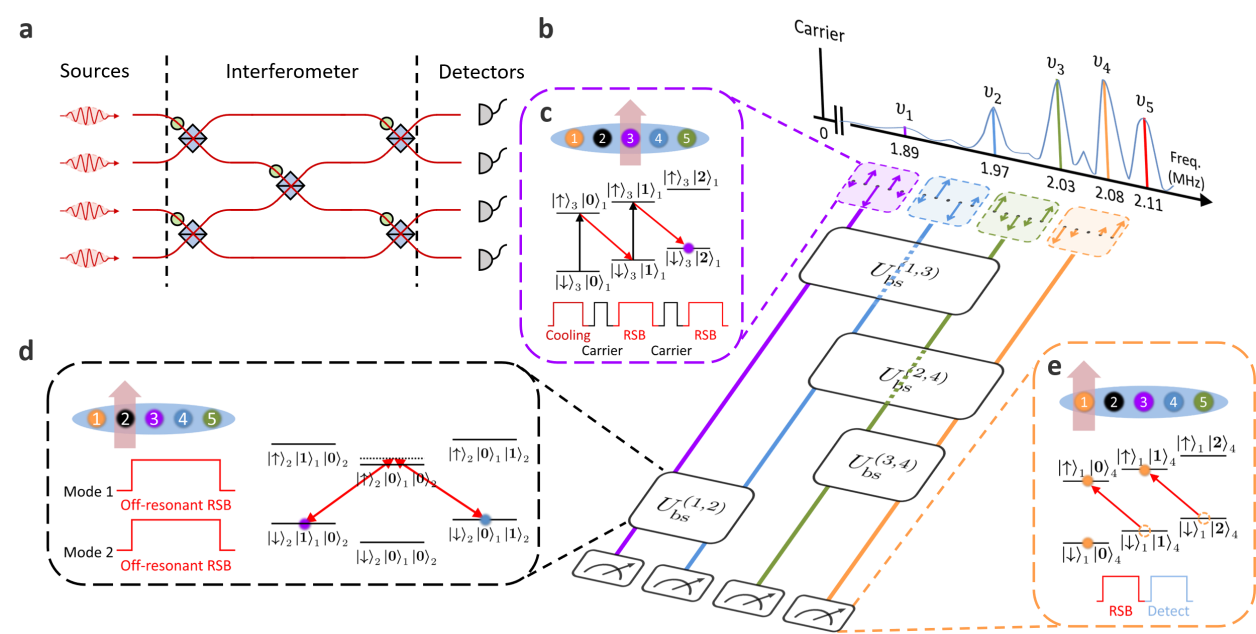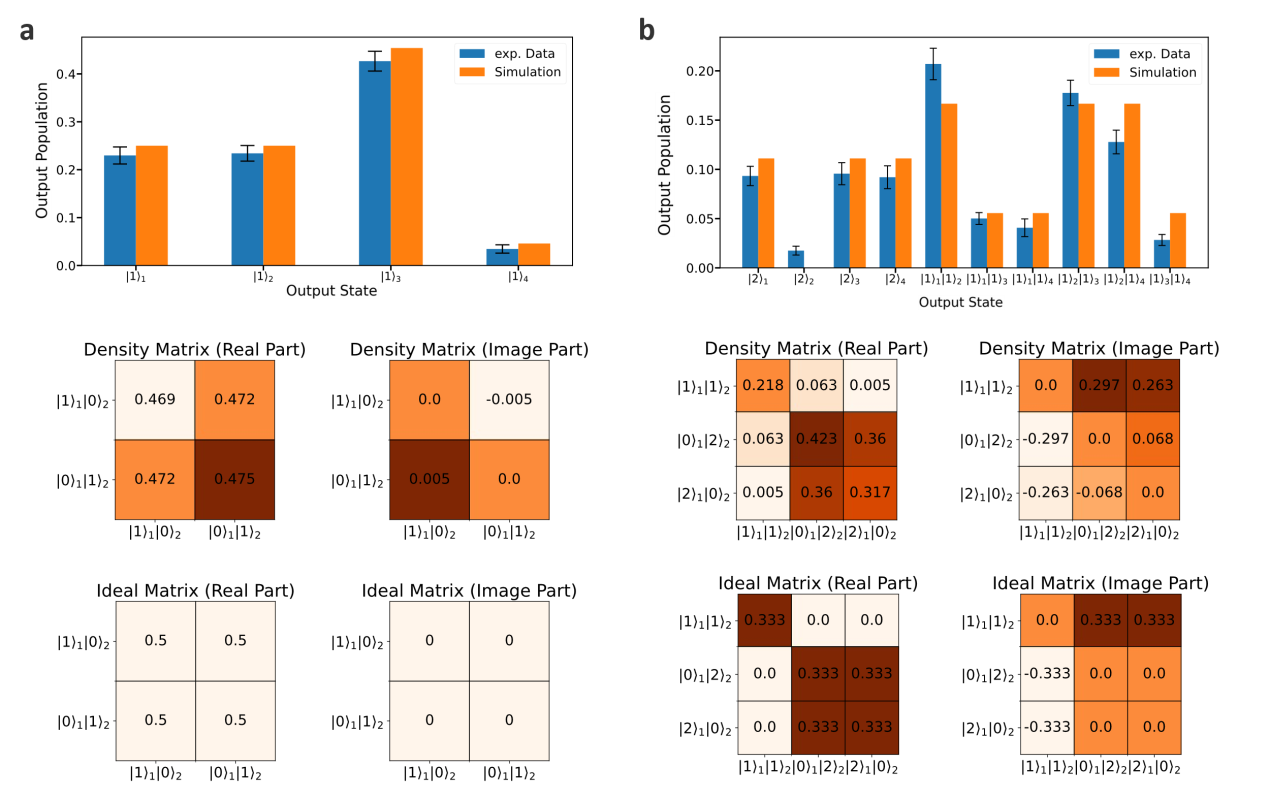Different from qubit-based quantum computer, a quantum computer can be realized with bosons, where the realization has been mostly pursued in optics systems with photons. Recently rapid progresses in photonic systems have been reported toward the realization of practical quantum computers such as the demonstration of quantum advantages of Gaussian boson sampling. In principle, it would be ideal if the photons are deterministically prepared and detected without loss in the direction. However, it is seriously challenging to realize such an ideal quantum system with photons due to the fundamental nature of photons.
Phonons are ubiquitous as a controllable quantum system for quantum technologies, which can be an alternative attractive choice to realize bosonic networks. However, quantum computing or simulations using phonons have been challenging despite some of the promising components developed, due to technical challenges in integrating all the techniques; initial state generation, gate operations and efficient measurements have never been demonstrated on a single platform.
Recently, a new study conducted by a research team led by Prof. Kihwan Kim of the Department of Physics at Tsinghua University made an important breakthrough by demonstrating scalable and programmable phononic networks using ion trap systems, which is the most advanced experimental demonstrations with phonons. The researchers found that the collective motional modes of one-dimensional ion chains are less susceptible to uniform electric field noise and generally allow phonon number conservation.

Figure 1 (a) Schematic diagram of a bosonic system structure. (b) Schematic diagram of a four-mode phononic network. (c) Phonon state preparation scheme. (d) Phonon beam splitter implementation scheme. (e) Phonon state detection scheme.
By using four collective motional modes from five ions, the team was able to demonstrate a phononic network (Figure 1b) that contains all the basic operations. By controlling the carrier and sideband operations of the ions, the phonon state in each mode can be deterministically prepared (Figure 1c) and detected (Figure 1e). At the same time, any beam splitter (Figure 1d) between two different modes can also be achieved by using Raman transitions of the ions with the strongest coupling, and the rotation angle and phase of the beam splitter can be controlled by the duration and relative phase of the two Raman beams.

Figure 2 (a) Single-phonon state reconstruction experimental result. (b) Two-phonon state reconstruction experimental result.
The researchers benchmarked the performance of arbitrary multi-mode phononic networks with fixed phonon numbers using typical tomography algorithms, and obtained high fidelity in the reconstruction of single-phonon (Figure 2a) and two-phonon input states (Figure 2b). These research results demonstrate a clear path to extend phononic networks for quantum information processing and overcome some of the technical limitations of classical and photon systems. The demonstration clearly shows the deterministic preparation and detection of phonons in multiple modes and a programmable control of beam splitting operations between any pairs of modes with negligible loss. It can be straightforwardly scaled up to over hundreds of modes by trapping comparable numbers of ions in a single trap.
This work was published on February 27, 2023, under the title "Scalable and Programmable Phononic Network with Trapped Ions" in Nature Physics. The Corresponding authors of the paper are Wentao Chen from Tsinghua University, Prof. M.S. Kim from Imperial College London and Prof. Kihwan Kim from Tsinghua University. The first author of the paper is Wentao Chen. The work was supported by the innovation Program for Quantum
Science and Technology and the National Natural Science Foundation of China.
Link to the full article: https://www.nature.com/articles/s41567-023-01952-5